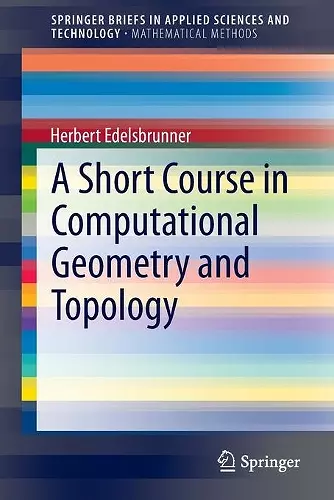A Short Course in Computational Geometry and Topology
An introduction to essential geometric and topological concepts
Format:Paperback
Publisher:Springer International Publishing AG
Published:12th May '14
Currently unavailable, and unfortunately no date known when it will be back

This book offers a concise exploration of computational geometry and topology, focusing on key concepts like homology theory and persistence.
This insightful monograph, A Short Course in Computational Geometry and Topology, provides a comprehensive introduction to essential concepts in computational geometry and topology. The book begins with an exploration of Voronoi diagrams and Delaunay triangulations, which serve as foundational elements in the study of spatial structures. Following this, the author delves into the theory of alpha complexes, highlighting their significant applications in biology and other fields. This initial section sets the stage for understanding the geometric and topological frameworks that underpin various scientific inquiries.
The central focus of A Short Course in Computational Geometry and Topology is on homology theory and its computational aspects. This section is pivotal, as it discusses the methods for calculating homology groups and introduces the theory of persistence. Persistence plays a crucial role in applications such as shape reconstruction and data analysis, making it an indispensable tool for researchers and practitioners alike. The clarity with which these concepts are presented makes them accessible to a broad audience.
Targeted towards researchers and practitioners in mathematics, biology, neuroscience, and computer science, the book also serves as a valuable resource for graduate students in these disciplines. By bridging the gap between theory and application, A Short Course in Computational Geometry and Topology equips readers with the knowledge necessary to apply geometric and topological methods to real-world problems.
ISBN: 9783319059563
Dimensions: unknown
Weight: unknown
110 pages